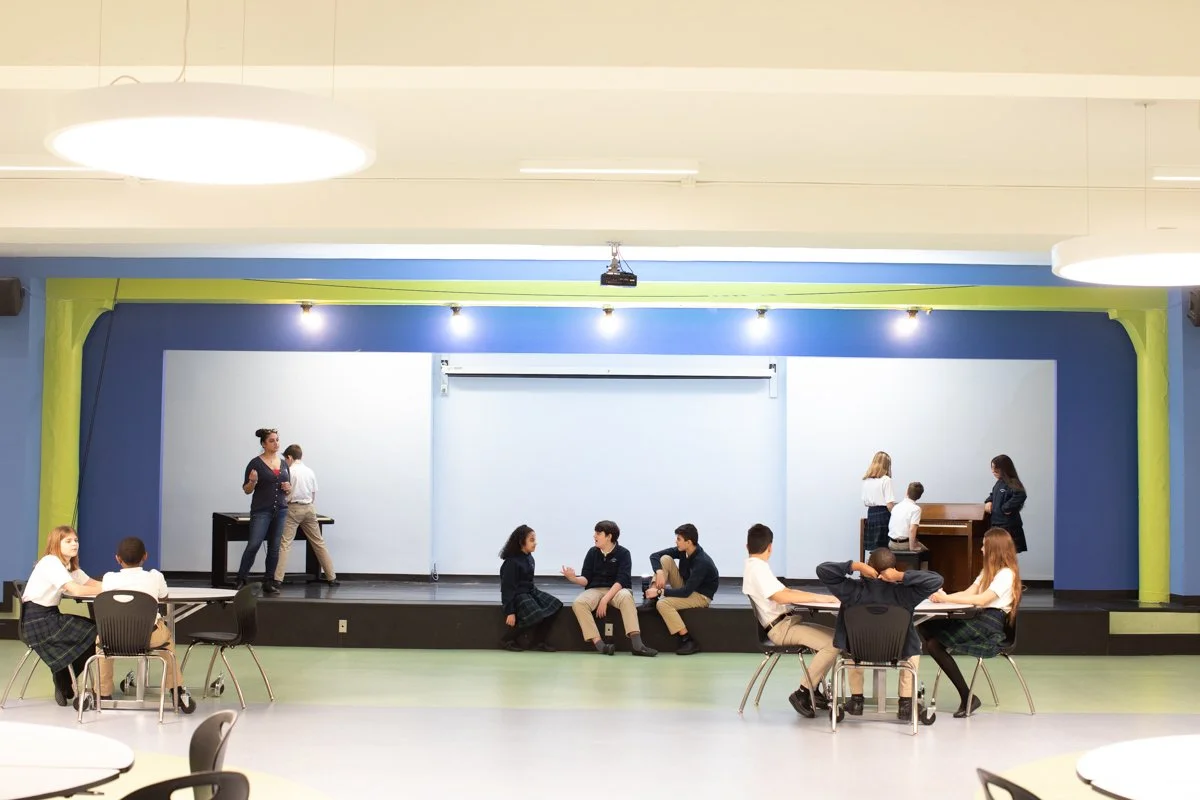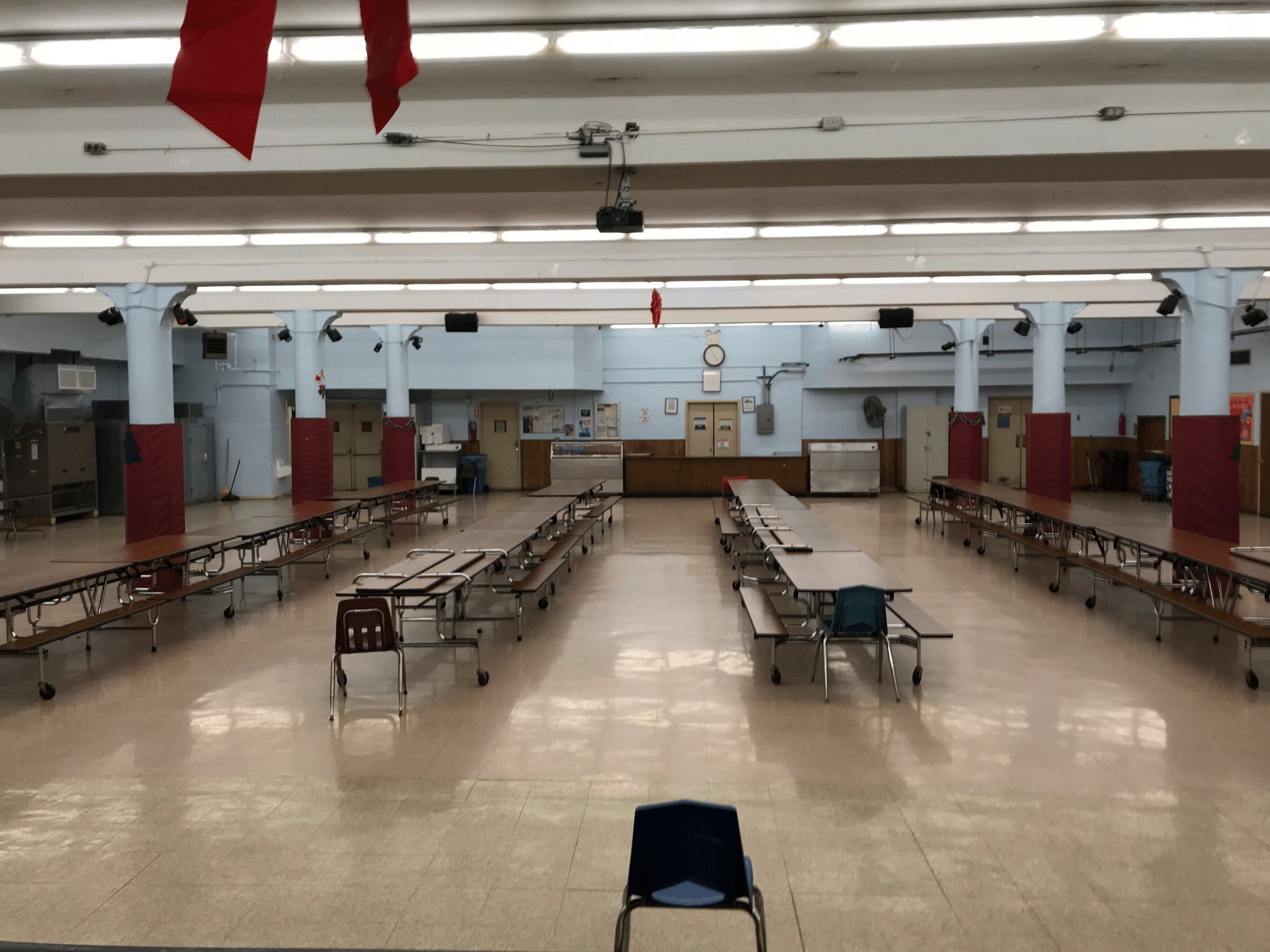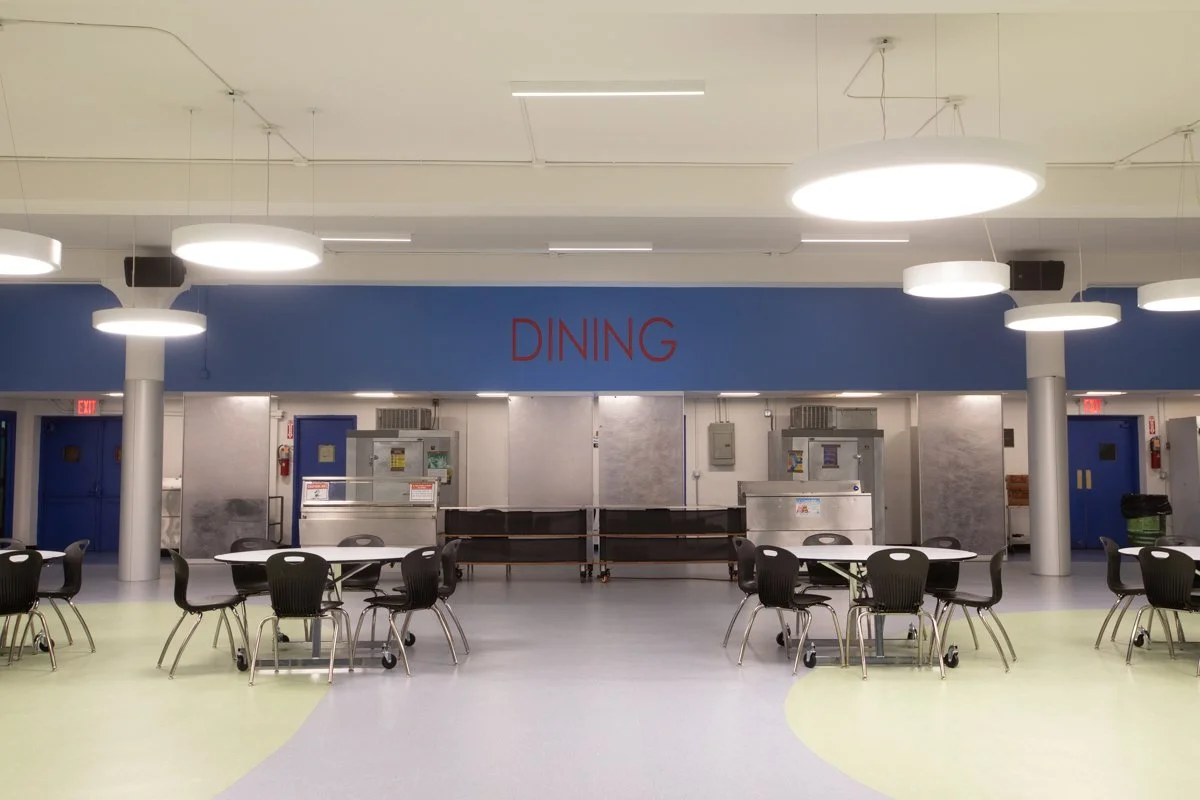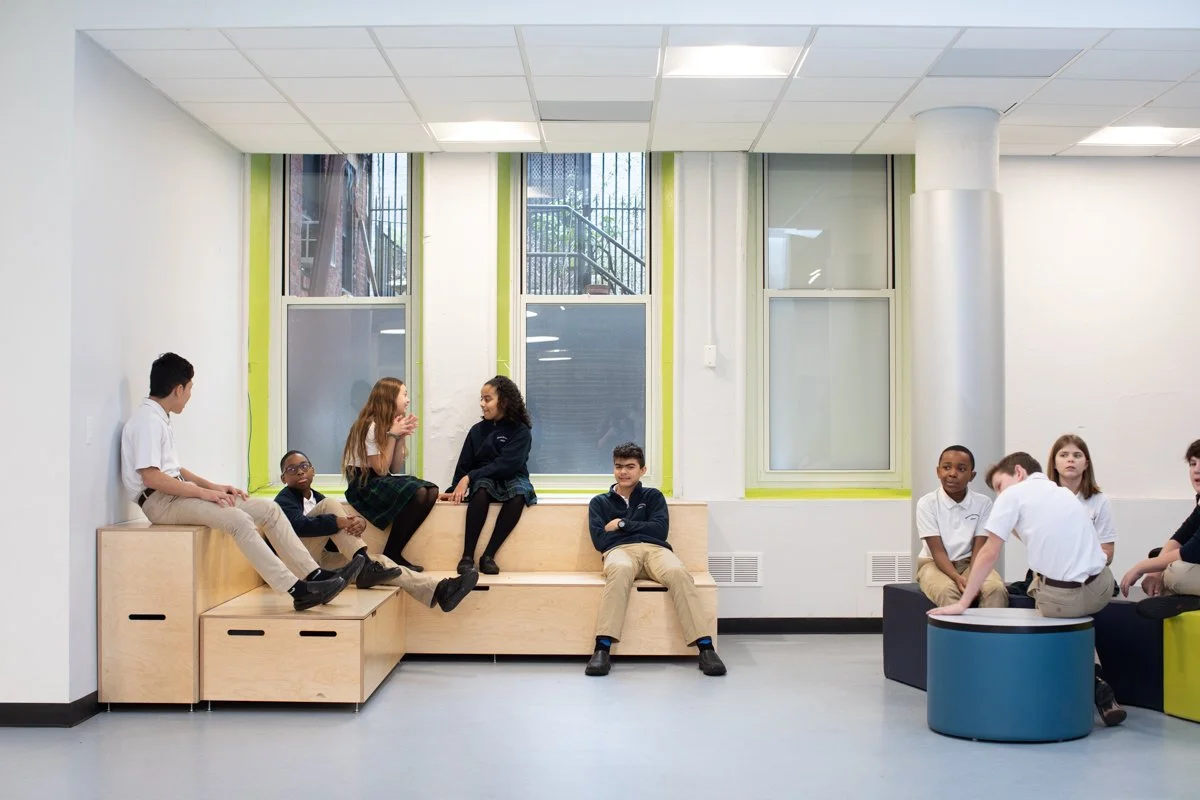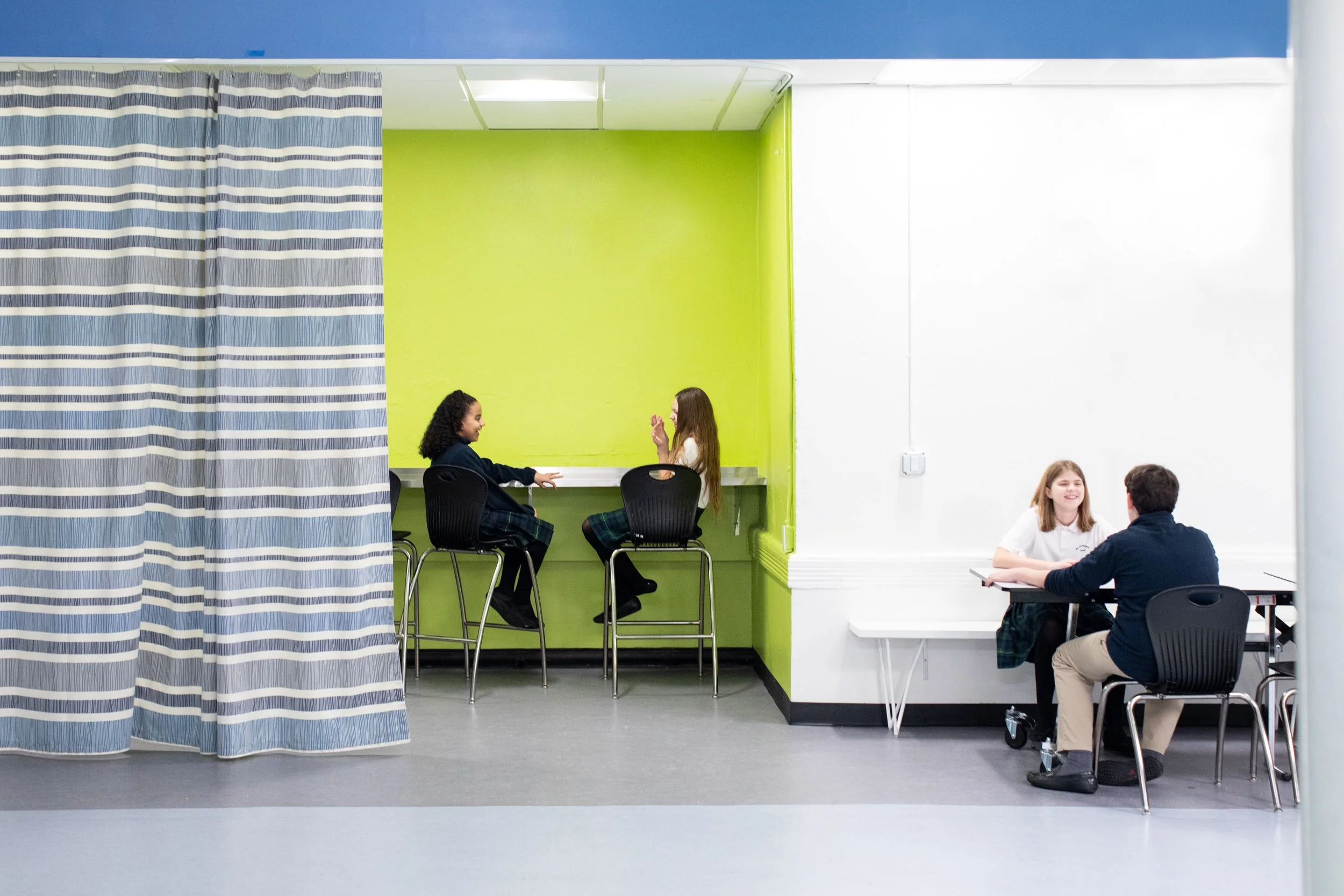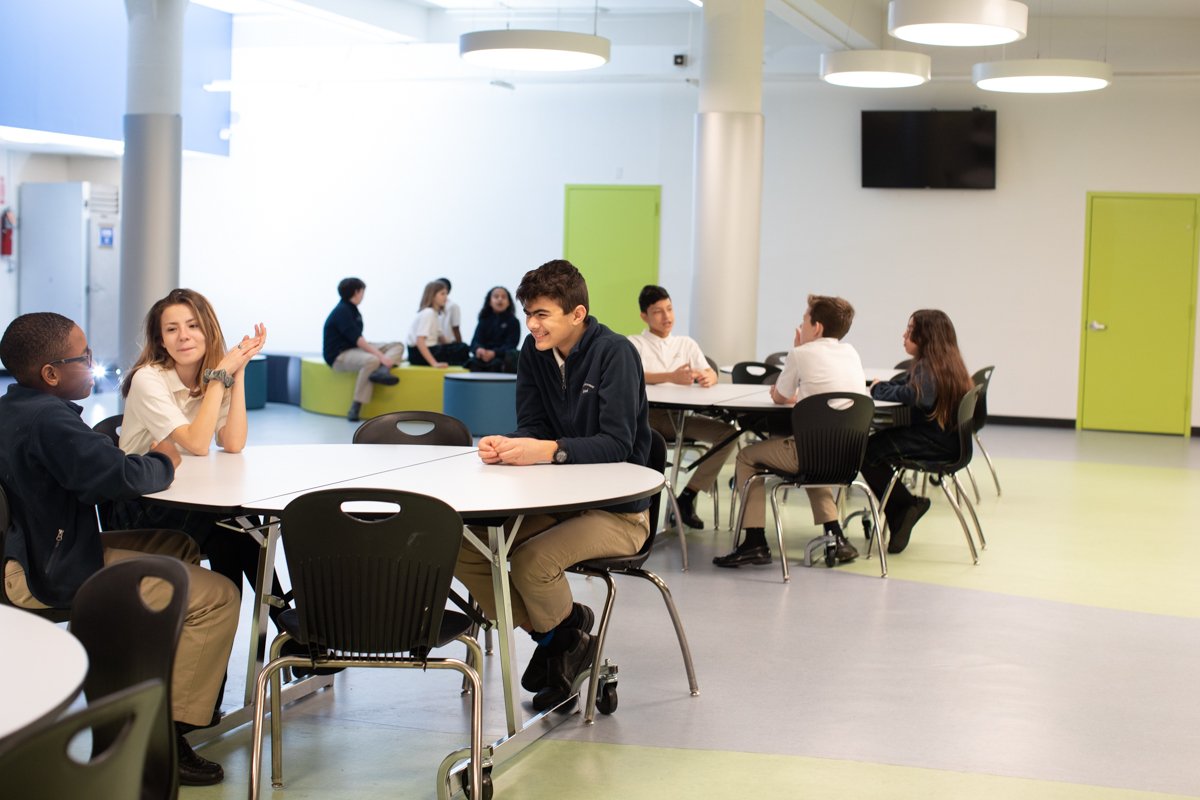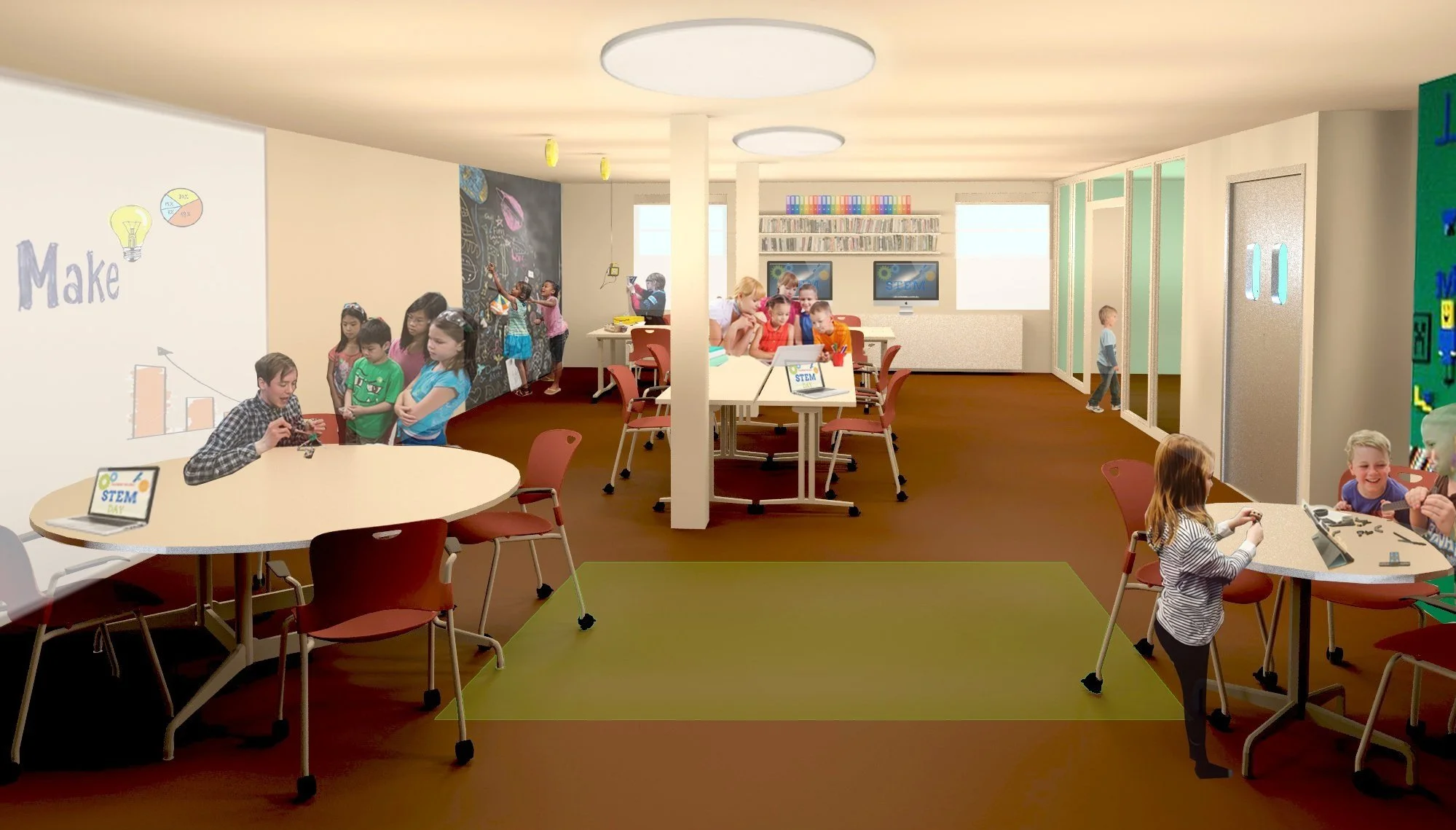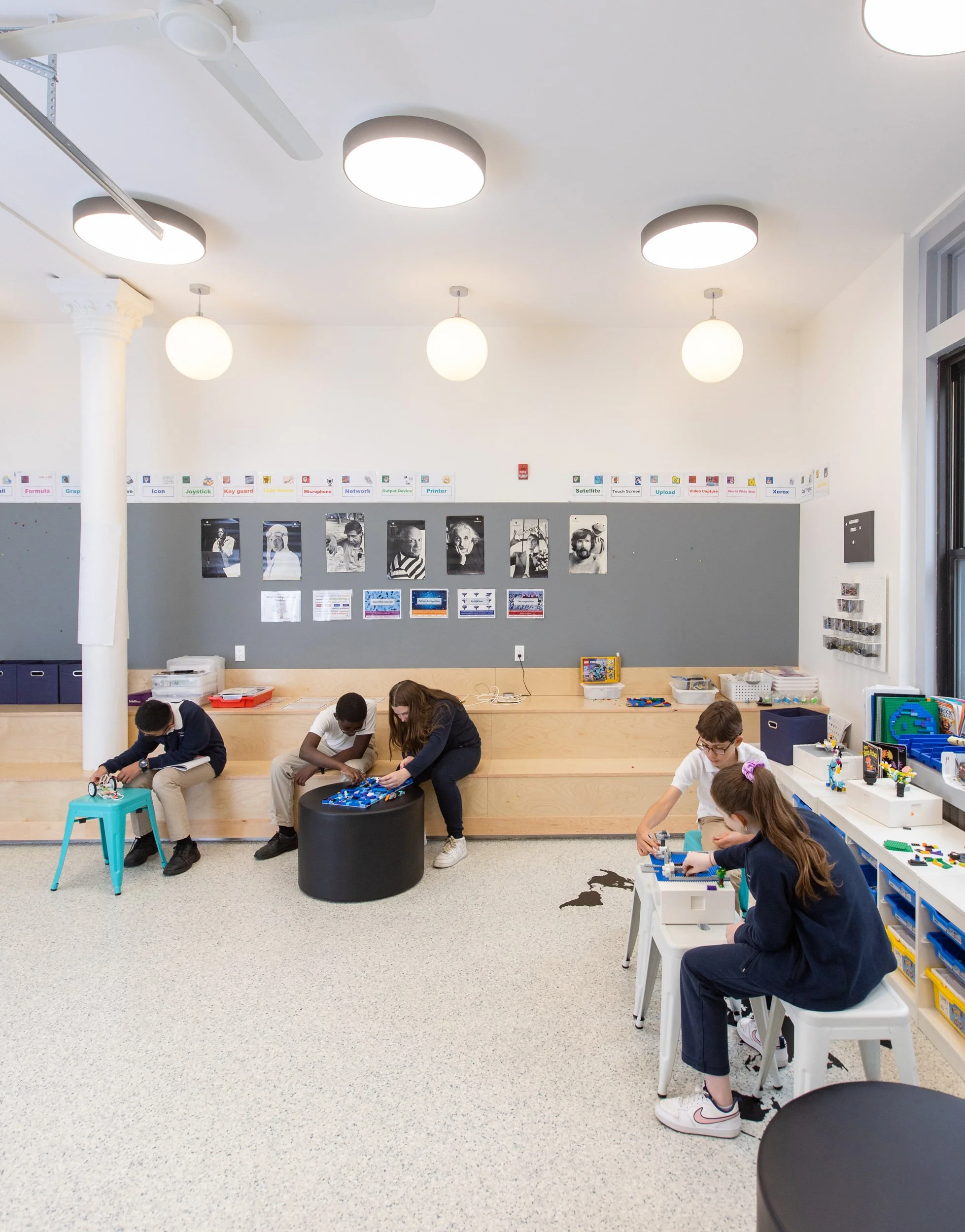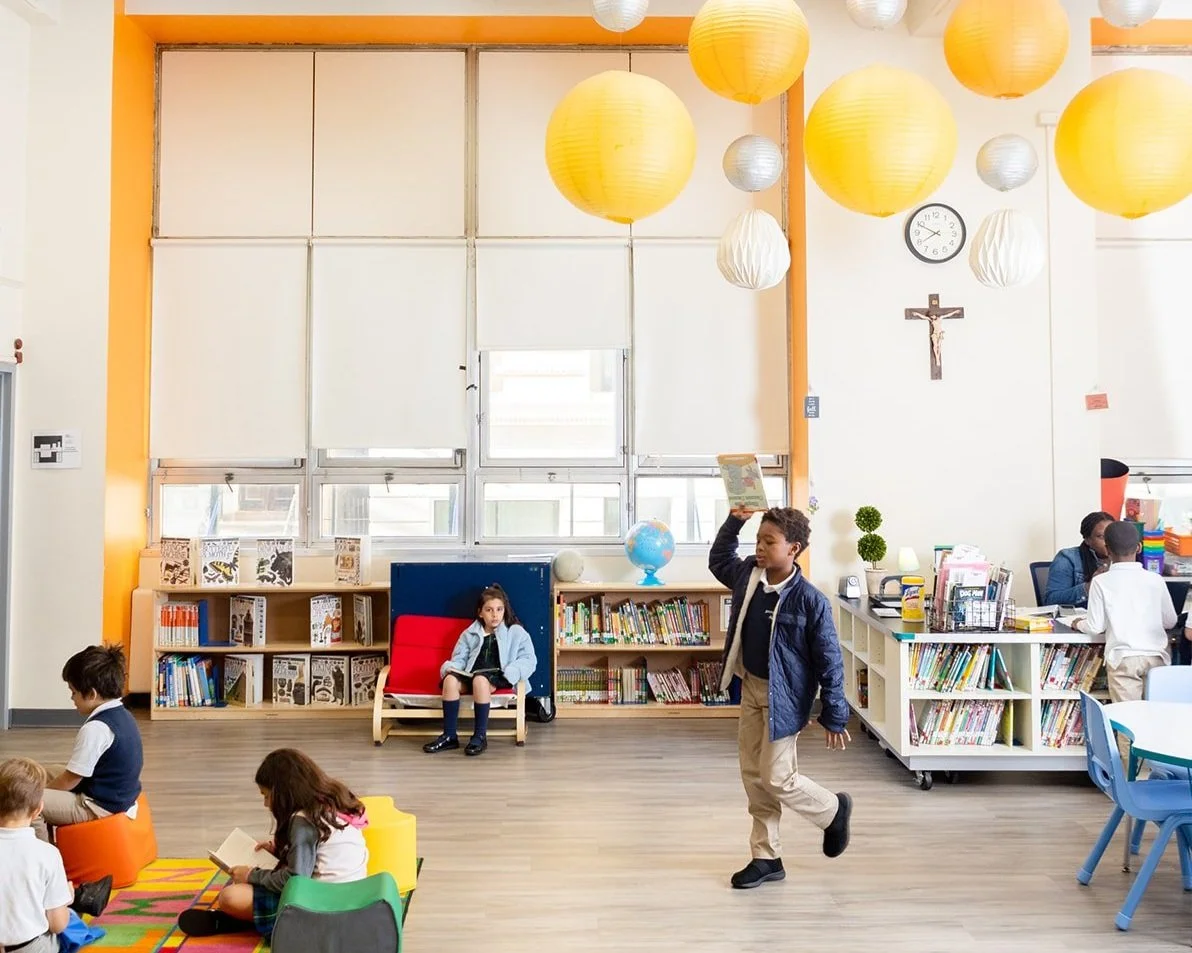Learning Commons + Cafeterias
What role does the learning commons or cafeteria play in the interplay of spaces in the contemporary school and how can it play a role in educating the child? There can be a lot of assumptions in room labels; we use design thinking to unpack those.
Background
Before leaping into a design when a client says we need a “cafeteria” or a “learning commons,” we often suggest stepping back to look at the need and the purpose before assuming that we all know the definition of the programmatic term.
Design Challenge
It can be hard to find the time or money in the design budget to probe for the real need but when space and dollars are so scarce, we find that it is well worth doing this so that we can design a space that serves more than one purpose or that answers a need a client didn’t even know they had.
Design Strategy
While our depth of experience in education brings a lot of knowledge and resources to a planning conversation with a school, it is never a replacement for careful listening. We believe it is important to understand the institution's mission and how the design of a space might complement their goals, such as serving the general public or needing a supplemental income with a rental space. All of these factors can influence the design and can be hard to achieve after the fact. We end up discovering an institution’s challenges that might not obviously be affected by design — like the amount kids are eating in the school cafeteria.
Impact
Improved food consumption by designing cafeterias that kids want to be in by allowing them to choose how and where they eat — maybe alone or with a large group of friends in a casual environment.
Increasing collaborative learning and the exchange of ideas among faculty members and staff in creating a “learning commons.” The flexible seating and available technology let students and faculty think together beyond the confines of an individual discipline or a traditionally arranged and sized classroom.

